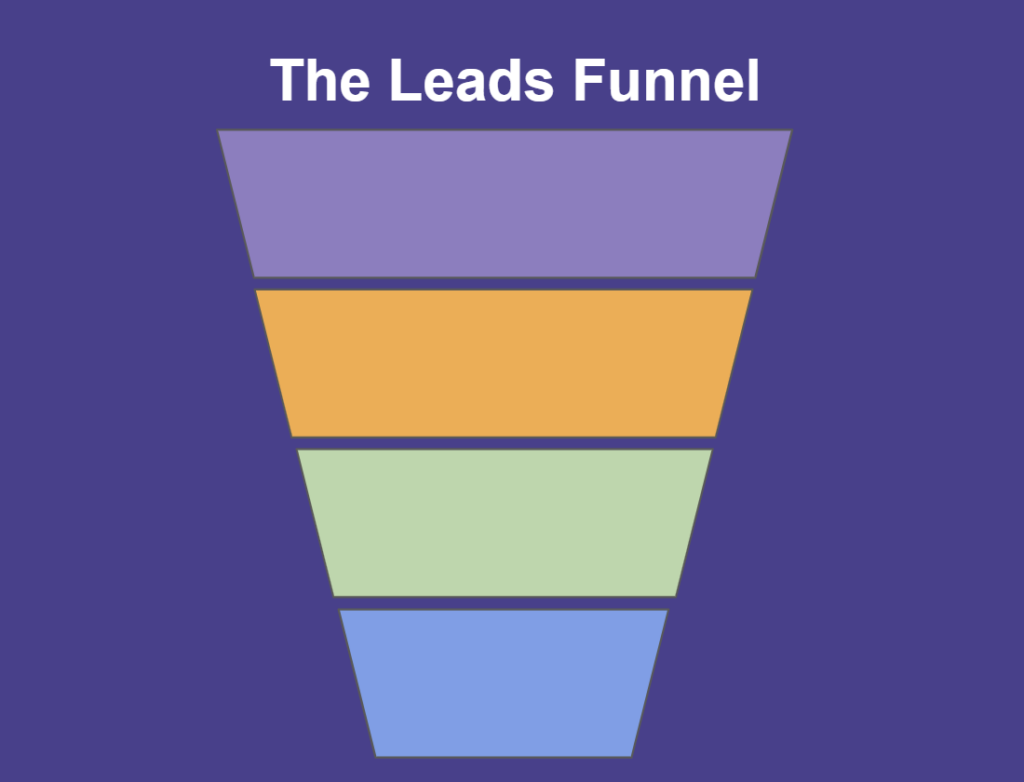


There is a set of top growth channels available to generate leads and raise awareness.
Each channel is appropriate for a specific stage and type of business.
But, how to prioritize and execute systematically?
In this guide, we’ll explore:
We’ll start with the free, organic ones, and then move to the paid and/or more complex ones.
Social media platforms like Facebook, Instagram, LinkedIn, and Twitter are a great way to build an audience organically. They’re free to use, but it takes significant time and effort to grow your presence.
Organic reach is limited, and it often requires sponsored posts to amplify impact.
See our post on social media posting frequency to understand what to post and how many times.
SEO is crucial for long-term growth and visibility. Optimizing your website for search engines helps you attract organic traffic without paying for clicks.
SEO can take months to show results. Moreover, acquiring quality backlinks is quite tough without a lot of effort.
Gradually build backlinks over time. If you have budget, hire experts to help you execute and get quicker results.
Creating valuable content like blog posts, videos, and infographics can attract and engage potential customers. This is especially effective for building brand authority and trust.
Content marketing can be time-intensive. It requires consistent production and investment to be effective.
You need a hook. Creating interactive lead magnets such as quizzes and self-assessments help attract potential customers because they focus on your audience and can personalize the value delivered. They provide instant value.
In fact, they often result in 3-5 times more lead generation than regular assets such as blogs.
You still have to post about your lead magnet and get traffic to it. So combining this with content marketing, SEO and social media posting is a good approach.
To Do: If you’re an expert (like a coach or consultant), you are best suited for audience first marketing. Create a framework on how you can help clients diagnose their pain. Then create a quiz or self-assessment around it. Or you can even help clients determine a high level solution approach.
Reaching out personally to prospects via email or LinkedIn can be effective for getting your first few customers or attracting high-value clients.
It’s time-consuming to do at scale and best for businesses that can afford the extra cost of hiring inside-sales staff.
To Do: Focus on personalization when crafting outreach messages. This is ideal for early-stage businesses or B2B companies targeting specific decision-makers.
Webinars are an excellent way to build trust with potential customers while providing valuable information. Partnering with credible influencers can increase the effectiveness.
Webinars require upfront planning, promotion, and technical setup.
Mass email outreach is a scalable and direct method of reaching potential leads.
Crafting personalized segments and writing tailored messaging requires effort. Setting up email accounts and audience lists can also take time. But the costs are pretty stable as your audience increases. You can have reasonable scale with as little as $100 to $300 a month.
To Do: Cold email is ideal for quick wins. They deliver results quickly. For SaaS or service-based businesses, segment your email list and send tailored messages to different customer personas. The results can be quick and tangible. Ensure that you avoid spamming, keep messages short, and allow people to opt-out.
Paid advertising through Google can drive immediate traffic and conversions if done right.
It requires proper budget management (costs vs benefits of conversion), keyword research, and optimized landing pages.
To Do: Google Ads are great if you have a clear conversion path (like lead magnets or sign-ups) and finally a big sales. If you’re selling a high-ticket product or service, Google Ads can be a good investment to generate targeted leads quickly.
Collaborating with influencers in your niche allows you to tap into their established audience. Influencers can help amplify your brand’s message and credibility.
It requires finding the right influencers and often involves compensation or revenue-sharing arrangements.
To Do: Start by identifying micro-influencers within your industry. For niche markets, micro-influencers with highly engaged audiences often yield better ROI than larger influencers. Consider both paid and product-based collaborations.
Referral programs encourage your current customers to recommend your product or service to others, often in exchange for rewards or incentives.
Building a solid referral program that motivates people to participate can take time.
To Do: : Incentivize current users or clients to share your service. This works particularly well for businesses with a strong customer base. If you have scale, then use software to track and manage referrals and rewards.
Co-marketing involves partnering with other businesses that share a similar target audience but aren’t direct competitors. You can collaborate on content, webinars, or joint promotions.
You need to find the right partners who align with your brand and target market. SaaS companies can partner with complimentary technology platforms. Coaches and consultants can partner with other experts in adjacent areas. Like with every channel, focus on a few partners and try to scale them systematically.
To Do: Look for non-competing businesses that serve the same customer base. Joint blog posts, email swaps, and co-branded events can drive traffic and generate new leads for both parties.
Creating or joining online communities (e.g., Facebook Groups, Slack communities, or Reddit threads) allows you to engage with prospects and build trust over time.
It requires consistent involvement and can take time to grow.
To Do: If you’re in a niche industry, consider starting your own community around shared interests or challenges. Engage by offering helpful advice and resources. As your community grows, you can introduce paid services or products.
Hosting or appearing on podcasts allows you to showcase your expertise in a conversational format, reaching listeners who prefer audio content.
Producing regular podcast episodes can be time-consuming, and gaining traction in a crowded space can be tough. It can be much easier to offer your insights to existing podcasts. Podcasters are always looking for bring on interesting insights and break into new audiences. So it’s great if you can help them market to your audience too.
To Do: Start by guesting on established podcasts relevant to your audience. If you host your own, create a content calendar and promote it across your other channels to gain listeners. Podcasts are great for building brand authority.
Affiliate marketing involves paying commissions to individuals or companies for referring customers to your business.
Managing an affiliate network can be time-consuming, and success depends on finding trustworthy affiliates. It typically works best for SaaS companies. But it can work for professional services if you can keep your affiliates engaged with the right tools such as content marketing.
To Do: If you have a product or service that works well for affiliates, consider setting up an affiliate program. Pay-per-sale or pay-per-lead models work best. Start by targeting bloggers or influencers in your industry.
Getting press coverage or mentions in media outlets can help boost your credibility and attract new customers.
Gaining media attention requires building relationships with journalists or PR professionals.
To Do: Work on crafting a compelling press release about your business’s achievements, innovations, or milestones. Build relationships with journalists in your niche to increase the likelihood of press coverage.
Attending or sponsoring industry events, tech conferences, and business expos can be a powerful way to generate leads, build brand awareness, and establish authority in your niche.
These events attract highly targeted audiences, making them an effective investment. While costs can be high (travel, booth setup, sponsorship fees), the ROI can be significant, especially for B2B businesses and high-ticket offerings.
As you can see, there are numerous growth channels available, each with its own advantages and challenges. Here’s how you can prioritize them based on your business:
Expert & Professional Services Businesses (e.g. Coaches and Consultants )
Start with: Lead magnets (quizzes, self-assessments), blogs, personal videos, and social media posts. Focus on being listed on directories where your audience may look for services like yours. They are low cost and help you refine your offer and messaging. You should also do a webinar every few months but keep it focused and practical.
Then: Expand your content marketing – appear on podcasts, do guest posting in other publications, and try to co-market with a partner or two. This is basic PR. If you have the budget you can seek the services of a PR expert and run ads too.
SaaS or Product-Based Businesses
Start with: Lead magnets (quizzes, self-assessments), Google ads, basic SEO (blogs, some backlinks), cold mass email, and social media posts.
Then: Invest in SEO for backlinks, expand content marketing to produce videos and infographics, and invest in ads to scale. Consider webinars and partnerships to expand your reach. If you have the budget you can seek the services of a PR expert too.
Choosing the right growth channels requires a deep understanding of your business model, audience, and resources.
Not everything is right but depends on the stage of your business. Start small, test the waters, and scale the strategies that deliver the best results.
Take the first step by creating a lead generation quiz or self-assessment for your business. Sign up for your 14 day trial.

Feeling frustrated with lead generation?
Take this free, 5-minute quiz and get more prospects into your leads funnel.
Instant Results. Actionable recommendations. Email required.
Find Your Score >>